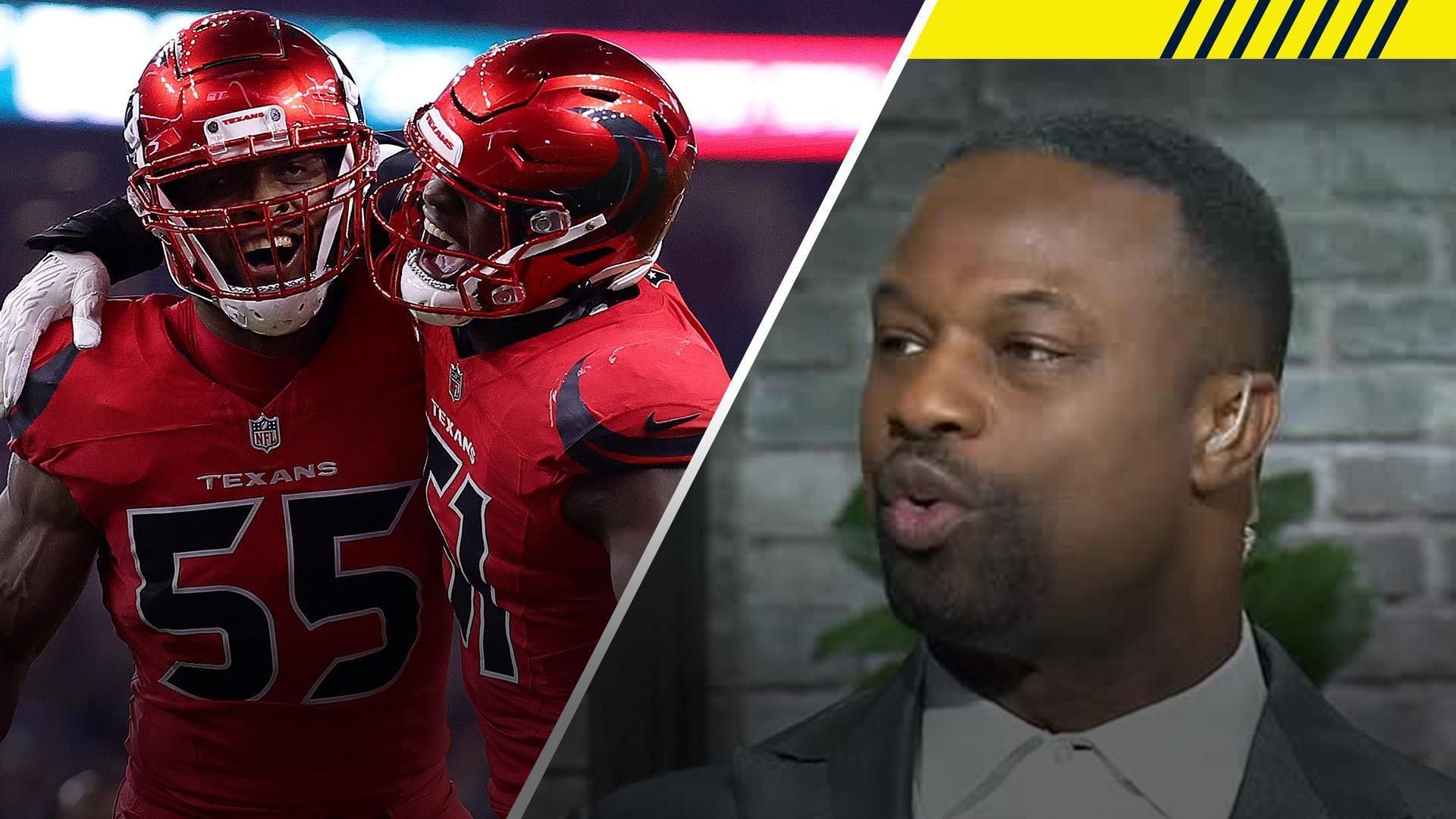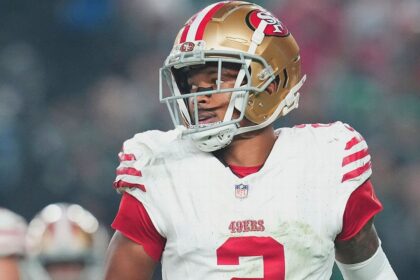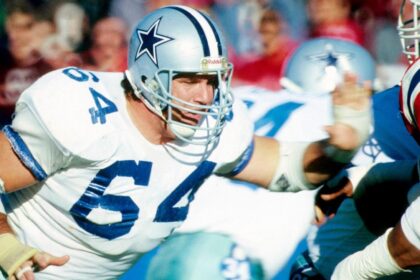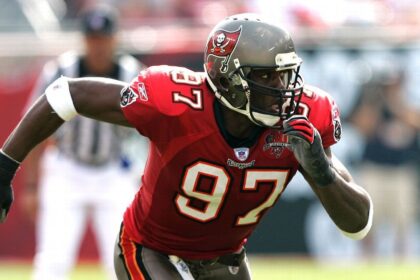Week 12 of the NFL is history! It was a day marked by excitement and near upsets. The Giants led the Lions for much of their game, the Colts put the Chiefs on the ropes, and the Jets dominated the Ravens at halftime. No lead was safe, not even the 21-point advantage that the Eagles, normally masters of managing results, built against the Cowboys. Winning in the NFL is complicated. And even more difficult? Writing about the NFL. Every Tuesday, we will analyze the previous week’s action, delving into the most relevant stories and what the future holds. We will look for measured reactions to exaggerations, celebrate the exciting moments that sometimes go unnoticed, and highlight what you might have missed on Sunday and Monday. Get ready for video analysis, statistics (a whole section!) and, above all, lots of fun.
Highlights: Sanders’ Debut
Each week, this column will begin with a detailed analysis of a key game, player, or trend from the previous day. What does it mean for the rest of the season? This week, we’ll explore the ups and downs of Shedeur Sanders’ first game as a starter in the NFL and whether the Browns should keep him in the position.
On Sunday, the Browns gave Sanders the start, their third quarterback of the season, when the fifth-round rookie took the field against the Raiders. Sixty minutes later, the Browns celebrated their third win of the season, defeating the Raiders 24-10 and achieving their first away win since Week 2 of last season. For the first time in 435 days, the Browns enjoyed a victorious trip back to Cleveland. What a great feeling!
Sanders got the starting position because Dillon Gabriel, also a rookie, selected two rounds before Sanders, suffered a concussion in the Week 11 loss against the Ravens and was unable to play. In most cases, the starting position of a low-ranked rookie quarterback in a late season would not generate much interest. But due to Sanders’ successful college career, his fall in the draft and his lineage in the NFL, there was more attention on this game. To assess Sanders’ performance on Sunday, let’s put aside the embellishments of his career and focus on his contemporaries. Since the year 2000, 43 quarterbacks selected in the fifth round or later (including undrafted free agents) have started a game in their rookie season. As expected, most of these players found themselves in the same situation as Sanders: backups forced to start late-season games on poorly performing teams. Recent qualifiers include Spencer Rattler, Tyson Bagent, Tommy DeVito, and Clayton Tune. Here’s the average performance of the 42 quarterbacks who preceded Sanders in their first starts, compared to Sanders’ performance against the Raiders. Depending on how it’s analyzed, you could say that Sanders’ game was better than average… or worse than average, which, of course, would be great for the debate. The most optimistic perspective highlights that Sanders won his party, leading fifth-round or later quarterbacks to a 14-29 record in their first starts. He averaged nearly 10 yards per play, only surpassed by Todd Bouman in 2001 in this group of quarterbacks. Of course, most of those yards came on two plays: a long pass to Isaiah Bond in the first quarter and a big catch and run with Dylan Sampson in the fourth quarter. But that’s the nature of the offense the Browns ran for Sanders and have run for much of this season; it’s about YAC and explosive opportunities. Sanders had a 19% explosive pass rate, second only to Gabriel’s performance in Week 7 against the Dolphins among Browns quarterback starters this season. The launch to Bond was spectacular. Sanders performed at his best in college, throwing on the move to his right, a vantage point where he sees the field well and makes aggressive throws, even at the cost of being hit. With only five Browns players in protection, Sanders is responsible for buying time against the extra defender. The Raiders play Cover 0 behind the blitz, so Bond runs into the open space whenever he beats his man on the line. Sanders avoids the first defender and throws a beautiful pass on the move. Sanders only had two passes completed for more than 9 yards in this game. That was the first, and here’s the second, a similar play. When DE Maxx Crosby moves inside, Sanders moves to his right. The Raiders break the coverage, failing to get past wide receiver Jerry Jeudy as he runs down the field. An easy pass for an explosive gain… before the fumble. Due to these two big gains (and the 66 yards gained on Sampson’s pass), Sanders’ yardage performance seems respectable. But by the first-down/touchdown rate and the success rate, which weigh play-to-play consistency much more than explosive gains, we see that Sanders’ average plays were not so positive. Both numbers are below average for a low-ranked rookie in his first start. Let’s remember that he is facing the historical numbers of figures like Jeff Tuel, Zach Mettenberger, and Spergon Wynn. That being said, Sanders’ consistency from play to play matches what we expect from Browns quarterbacks so far this season. Compare Sanders’ start to Gabriel’s performance and Joe Flacco’s time, and he actually produced a better first-down/touchdown rate. Where he faltered in the play success rate, he made up for it in the explosive pass rate. He was less accurate, but he also threw more deep passes. Sanders also faced an average distance on third down of 11.6 yards, and 10 of his 21 plays were on third down. This invites a more aggressive style of play and, consequently, volatile results. The smartest thing would be… to do absolutely nothing with all this information. A start against the Raiders’ defense doesn’t provide a clear picture. Eliminate Sampson’s pass, and Sanders’ numbers plummet. Eliminate Jeudy’s fumble, and his EPA per play increases. The sample size is too small to tell us anything concrete. Gabriel’s sample (six games) is significantly larger. We can confidently say that Gabriel struggles to escape the speed and size of the NFL in the pocket, throw the ball deep, and create outside of the structure. Of 36 quarterbacks with at least 150 plays this season, Gabriel is last in play success rate, yards per play, and air yards per attempt. He plays with short passes in an offense that can’t sustain that style of play. That’s how he played in college, as he lacks the physical characteristics to consistently make long passes or extend plays under pressure. That’s him.Based on what we know about Gabriel so far, it would be good to learn more about Sanders for the rest of the season. The Browns will invariably look for a new QB1 next offseason, but with a good performance this season, Sanders could move up the quarterback depth chart from his August starting position as QB4.
We need to learn more about Sanders’ performance in the red zone. Despite Cleveland’s 24 points, Sanders did not attempt a pass in the red zone, as the Browns opted for their Wildcat package (something they also did at times with Gabriel at quarterback) in scoring position. In the red zone, NFL windows become narrower and passes must be made faster, something Sanders struggled with on Sunday. His interception is a good example. Sanders does well to throw the short pass to Jeudy when outside receiver Charles Snowden initially clears the window as he moves with the running back, but the ball has to come out now. Watch Jeudy turn to catch the ball, then pat his feet as he waits for it to arrive. Also watch Sanders’ feet. In a one-step drop, Sanders needs to land on his back foot ready to throw immediately. Instead, he hops to reset his foot and begin his throwing motion. This is not being nitpicky at all. Sanders doesn’t have an above-average arm, especially when it comes to generating velocity downfield. To succeed throwing into tight windows in the NFL, his timing needs to be impeccable. In a later release in motion, Sanders’ lack of top-tier talent reappeared. This is the type of release that Sam Darnold and Daniel Jones have reveled in this season: a short pass to the left. It’s difficult to get your whole body into a throw like this, running in the opposite direction of the quarterback’s dominant hand. Sanders has a tighter trunk than most NFL quarterbacks, so it’s difficult for him to get momentum from his hips to initiate his throwing motion. This ball is all arm and, consequently, it floats high and soft above the narrow window in which he’s trying to hit Cedric Tillman. This release serves as a reminder that even in those pre-draft moments when we believed Sanders was a first-round quarterback, he was despite his athletic limitations. He is not particularly fast, big, physical, loose, or with a strong arm. The belief in his professional projection was based on intangibles: toughness, composure, vision, creativity, and all of them were shown against the Raiders. But he is fighting uphill against dimensions and physics. It’s difficult to rate Sanders’ debut as good, but I wouldn’t call it bad either. I’ve seen many low-ranked quarterbacks take the field in the last decade, and some of those games have deeply offended me. (I’m looking at you, 2017 Nathan Peterman). Sanders’ game didn’t. Sanders did more than enough to get more starts for a Browns team with a 3-8 record that is deploying a historic amount of rookies and clearly building for the future. Gabriel has cleared concussion protocol, but is slated to be Sanders’ backup in Week 13, as the Browns continue to investigate what Sanders is capable of at the NFL level. That doesn’t mean Sanders is the starter for the rest of the season. It doesn’t mean Sanders is in the QB1 battle next year. And it doesn’t mean the Browns were wrong to start with Flacco and then Gabriel before Sanders (although I personally wouldn’t have chosen Gabriel over him). This just means Sanders has earned another start. Putting aside all the detailed analysis, the Browns won a game on Sunday, which is very exciting. The most exciting part? They got this victory with an astonishing 84.2% of their scrimmage yards coming from rookie contributors. Bond and Sampson starred in explosive plays with their speed. Harold Fannin Jr. (four receptions, 40 yards) continued to break an absurd number of tackles for a tight end. He is one of the most unique young players in the league, with the potential of a high-volume TE1 in the passing game. Running back Quinshon Judkins (16 carries, 47 yards, two touchdowns) continues to accumulate physical runs and create hidden yards, especially in the red zone. Browns’ rookies accounted for 100% of the team’s passing yards, 100% of their rushing yards (114%, actually), and 75% of their receiving yards. According to the Elias Sports Bureau, this has only happened in one other game since the 1970 merger. The 1974 Chargers did it, and they had 17 draft picks to work with, compared to the seven we have today. Congratulations to Andrew Berry and the Browns’ personnel staff.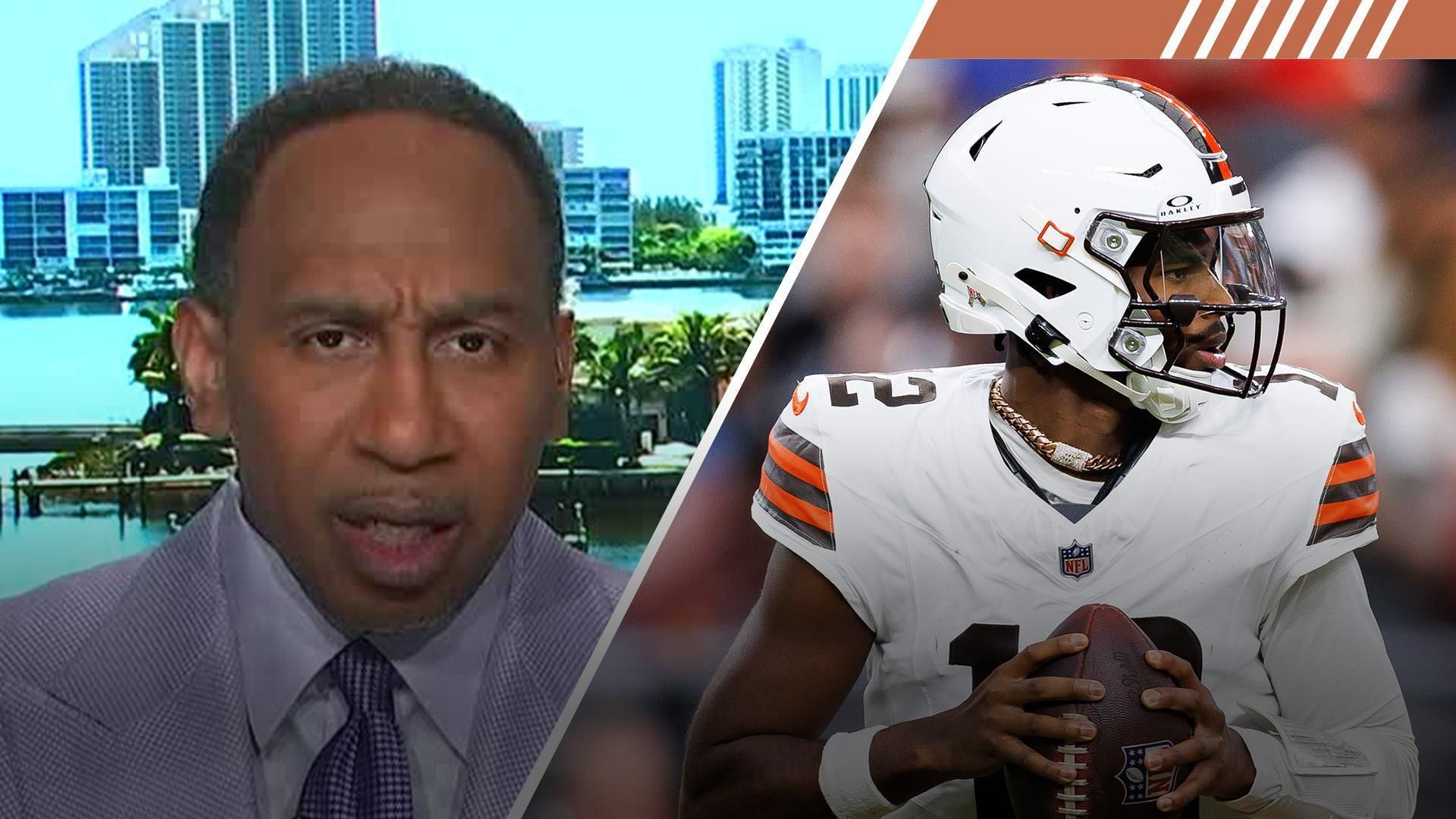
Second opinion: The AFC South is open
“First Take” from ESPN is known for, well, providing the first opinion on things: instant reactions. “Second Take” is not a place for instant reactions, but where I will let the dust settle before taking perhaps a slightly contrarian view. The Colts have an offensive problem, and more specifically, they have a problem in the passing game. Three of Daniel Jones’s worst four EPA per play outings have been in the last three games (against the Steelers, Falcons, and Chiefs). A few chips are falling on the Colts’ offense, and the chain reaction is leading to ever-greater disappointments. The first is a fall to earth for Jones in a key metric: the pressure-to-sack rate. This metric, which tracks the rate at which a quarterback converts his pressured plays into sacks, is usually quite constant. It had been relatively stable throughout Jones’ career… until the first half of the 2025 season, when it suddenly plummeted to league-best levels. This problem is most obvious in clear play situations: shotgun snaps, passing downs, or plays with only five men in protection. The Colts were putting five receivers into the concept at a rate well above the league average, and the offensive line held up well even with two new interior starters (center Tanor Bortolini, guard Matt Goncalves). But against the Titans’ big interior offense in Week 8, and especially against the Steelers’ fast outside offense in Week 9, Jones’ composure in the pocket began to crumble. In response, the Colts have completely discarded the five-man protection concepts from the game plan. In Week 10, the Falcons relentlessly pressured Jones, forcing Colts running back Jonathan Taylor and tight ends to stay in to pick up extra rushers. When the Chiefs similarly turned up the heat in Week 12, the Colts kept seven or more blockers on 34.4% of Jones’ plays, the highest rate for any team in any game this season. With fewer routes in the concept, the Colts’ incredibly deep receiving room becomes easier to account for in coverage. When Jones could pick his man-to-man coverage matchup across the board of Josh Downs, Alec Pierce, Michael Pittman Jr., and Tyler Warren, the defense was likely to lose over time. But now that the eligible receivers are stuck in pass protection, the Colts become easier to defend.Of course, pressuring the Colts means eliminating second-level defenders and pursuit players. If Taylor were to make his way to the third level, or the Colts connected on a well-timed short pass, it would be a run. This is where the Chiefs’ excellent tackling came into play on Sunday. Safety Bryan Cook made a touchdown-saving tackle on Taylor in a one-on-one situation in the open field. Cornerback Trent McDuffie corralled a charging Warren on a screen in the red zone. Ask the Falcons, who implemented a similar game plan, what happened to them when Taylor finally reached the third level.
As Jones gets more scared of the pressure, Colts coach Shane Steichen gets more scared of Jones. Typically one of the league’s most aggressive decision-makers, Steichen did exactly what one can’t do in Arrowhead: avoid fourth-down opportunities and keep the margin close. The Colts faced four fourth-down decisions that Next Gen Stats characterized as passing plays. Steichen lined up the offense for only one, and Goncalves committed a false start even before the ball was snapped. On the other three, Steichen kicked the field goal or punted. The erosion of trust in Indianapolis can be felt. Jones is getting the ball out faster and underneath more often as he loses confidence in his offensive line. This was the first game of the season in which he didn’t attempt a deep pass, even though the Chiefs’ safeties were just 9.6 yards from the line of scrimmage, the second-closest distance safeties have been from the line in any game this season. As Jones’ confidence in his line falters, so does Steichen’s in his quarterback. The once unstoppable Colts offense has become mortal. The offensive isn’t completely resolved, of course. Taylor still breaks that third-level tackle more often than not. But the Colts are in a slump at the worst time. After Week 8, Indianapolis had a 7-1 record with a 2 1/2-game lead over the Jaguars (4-3) and a 3 1/2-game lead over the Texans (3-4). During the Colts’ 1-2 stretch, Houston has gone 3-1 with a convincing win over the Bills, and the Jaguars have gone 3-1 with two overtime wins. Jacksonville’s only loss was to Houston in Week 10. Indianapolis (8-3) is now one game ahead of Jacksonville (7-4) and two games ahead of Houston (6-5). It is still very much in charge of its own playoff destiny. The problem is that Jacksonville and Houston are also in their own driver’s seats. The Colts have not yet played against Jacksonville or Houston this season. In other words, both contenders can take control of the division from the Colts by sweeping them; the Jaguars would be one game up in the win-loss column, and the Texans would be tied (but would win the tiebreaker).Of course, there are other games besides the intradivisional matchups. But the news doesn’t get better for Indianapolis. Besides the Jaguars and the Texans, Indianapolis faces the Seahawks (8-3) and the 49ers (8-4). Up to this point in the season, the Colts have had the third easiest schedule according to ESPN’s Football Power Index ranking.
I have my doubts about the Jaguars and Texans as complete teams and legitimate AFC contenders. I expressed some concerns about the Jaguars last week, and nothing about their Week 12 game against the Cardinals on Sunday has silenced those concerns. It marked the Jaguars’ second overtime win in four weeks against vastly inferior opponents (they also beat the Raiders), and Jacksonville beat the Cardinals despite being on the wrong side of a 4-0 turnover differential. They are the first team in NFL history to win a game with such a turnover differential. The Jaguars haven’t lost the games they should have lost, and now they are within striking distance of the Colts. They also have room to maneuver. Outside of their two remaining games against the Colts, Jacksonville hosts the Broncos, but also the Jets and the Titans twice. The Jaguars’ remaining schedule is the fourth easiest according to FPI projections.Remember, Indianapolis is defending against multiple challengers. The Texans play the Colts twice, but otherwise host the Chiefs, Cardinals, Raiders, and Chargers. That’s not as easy as Jacksonville, but all four games are winnable for a team that boasts a truly elite defense, especially if quarterback C.J. Stroud’s return to the starting lineup ignites the offense. Stroud remains in concussion protocol in anticipation of the Texans and Colts’ first game this coming Sunday. His availability is not guaranteed.
But the offense isn’t the straw that stirs the drink for Houston. We use the descriptor “elite” far too often, but it’s actually an accurate description of the Texans’ defense. Opposing passing games have a 38% play success rate against the Texans, the second-lowest number of the last 13 seasons. The only lower number is 37.9%, which belongs to the 2025 Broncos defense, equally elite. Of the 512 total seasons since 2010, the Texans rank 15th in EPA per opponent play, 23rd in points per drive allowed, and 26th in drive conversion rate. All of these are in the 95th percentile or better. That’s elite. The Texans’ defense is the best unit remaining in the AFC South, and as demonstrated on Thursday night, it can win any game against any opponent as long as the offense provides an average output. One can expect the Texans to mark man-to-man coverage and blitz packages in the final attempts, that has been a hallmark of DeMeco Ryans’ defense for years. Jones will be another week away from his calf problem, which should help, and Steichen’s Colts have always run well against Ryans’ Texans. But if Jones continues to wither under pressure, there are few defenses better positioned to expose that than Houston’s unit. For eight weeks, the Colts looked like one of the best football teams. They put their chips in the middle at the trade deadline. But things change quickly in the NFL, and now their control over the division is in serious danger. Four divisional games in six weeks make every Colts game a must-see event in the future. Don’t be surprised if that Week 18 game against Houston ends up being a photo finish for the AFC South crown.